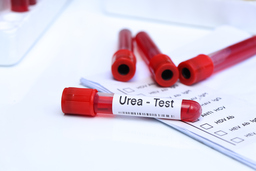Therapeutic Use of Carbamoyl Phosphate Synthatase-1
TECHNOLOGY NUMBER: 2019-076

OVERVIEW
Production of a novel recombinant human CPS1 (rCPS1) to treat liver injury- Shows efficacy in vitro in human and mouse cells as well as mouse models in vivo
- May diminish the need for liver transplant caused by situations such as acetaminophen toxicity
BACKGROUND
Acute liver failure (ALF) affects about 2000 patients per year in the United States, with drug-induced events being the most common cause. More than 100,000 cases of acetaminophen poisoning occur each year, and its deleterious effects on the liver may only be limited by the use of N-acetylcysteine if initiated in an appropriate time frame. In severe circumstances, ALF may become so severe as to require liver transplantation in an attempt to prevent death. The enzyme carbamoyl phosphate synthetase I (CPS1) is critical in controlling the urea cycle, a sequence of biochemical reactions that take place in the liver to process excess nitrogen that is generated through protein breakdown by the body. CPS1 is secreted into the bloodstream following acute liver injury and may serve as a potential prognostic marker for ALF due to its specific expression in the liver and its short half-life in the serum compared to other enzymes. CPS1 is the first and rate-limiting enzyme that catalyzes ammonia detoxification to urea, and its deficiency belongs to a class of autosomal recessive genetic diseases referred to as urea cycle disorders. Poorly functioning or absent CPS1 causes nitrogen to accumulate in the blood steam in the form of toxic ammonia rather than urea which can be excreted by the kidneys. Current treatment options for urea cycle disorders are limited, so a need exists for new methods to correct for dysfunctions in CPS1.
INNOVATION
Researchers at the University of Michigan have produced recombinant human CPS1 (rCPS1) as a potential treatment for liver injury. The inventors created rCPS1 by cloning the genetic sequence into a baculovirus expression system and purified it through the use of a standard laboratory protein purification protocol. This purified rCPS1 was tested in vitro using cell cultures with mouse or human macrophages as well as in vivo by intravenous injection into mice. In cell culture, the rCPS1 increased hepatic macrophage numbers and phagocytic activity in a manner that is associated with wound healing and tissue repair. Administration of rCPS1 in mice prevented liver damage caused by acetaminophen while also protecting against liver damage when given therapeutically following liver injury. Thus, recombinant rCPS1 holds potential as a novel treatment for ALF and CPS1 deficiency to help diminish the need for liver transplantation. Additionally, the technology holds potential as a research tool to further delineate the physiological role of CPS1 in liver protection. CPS1 may therefore have utility if given parenterally to prevent acute tissue injury in the liver and possibly other tissue.